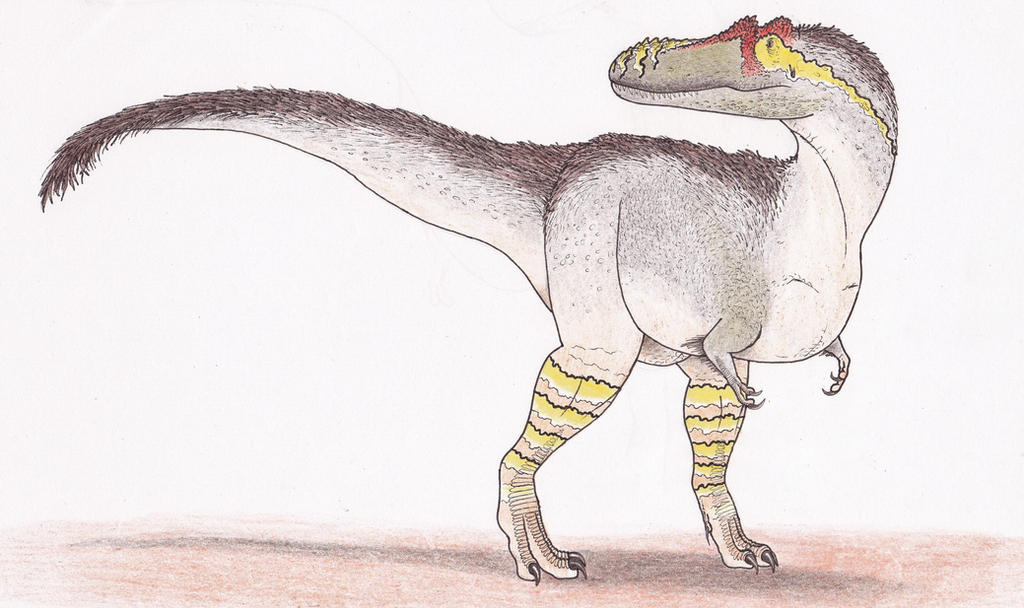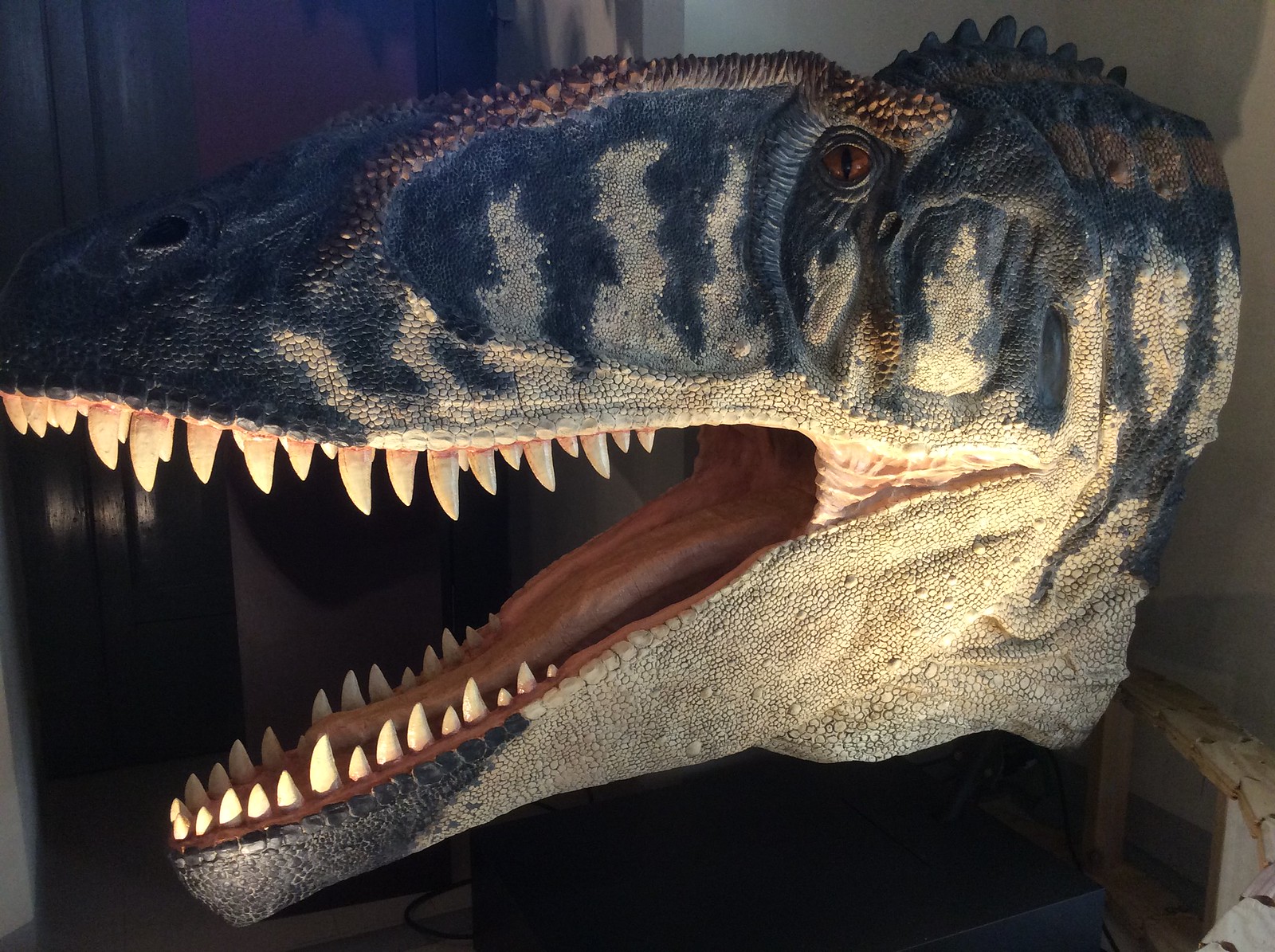Post by Carcharodon on Jun 2, 2014 6:07:30 GMT 5
Cryolophosaurus ellioti
Cryolophosaurus (cold crested lizard) is a genus of large theropod dinosaur known from only a single species, Cryolophosaurus ellioti, known from the early Jurassic period of Antarctica. It was probably over 7 metres in length and weighing more than 500 kg, making it one the largest theropods from the Early Jurassic. Cryolophosaurus possessed a distinctive crest on top of its skull that spanned the head from side to side, similar to a Spanish comb. It is thought that this bizarre crest was used for intra-species recognition. Cryolophosaurus is known from a skull, a femur and other material, the skull and femur of which have caused its classification to vary greatly. The femur possesses many primitive characteristics that have classified Cryolophosaurus as a dilophosaurid or a neotheropod outside of Dilophosauridae and Averostra, where as the skull has many advanced features, leading the genus to be considered a tetanuran, an abelisaurid, a ceratosaur and even an allosaurid. Since its original description, the consensus is that Cryolophosaurus is either a primitive member of the Tetanurae or a close relative of that group. Cryolophosaurus was first excavated from Antarctica's Early Jurassic, Sinemurian to Pliensbachian aged Hanson Formation, by paleontologist Dr. William Hammer in 1991. It was the first carnivorous dinosaur to be discovered in Antarctica and the first non-avian dinosaur from the continent to be officially named. The sediments in which its fossils were found have been dated at ~194 to 188 million years ago, representing the Early Jurassic Period.

Qianzhousaurus sinensis
Qianzhousaurus is a genus of tyrannosaurid theropod dinosaur. There is currently only one species named, the type species Qianzhousaurus sinensis. Nicknamed 'Pinocchio rex' for its long snout in comparison to other known tyrannosaurs, it was discovered in southern China and first published in the journal Nature Communications in May 2014. The bones were discovered by workmen at a construction site near the city of Ganzhou, who then took them to a local museum. Lead author Professor Lü Junchang from the Institute of Geology, Chinese Academy of Geological Science stated that "the new discovery is very important. Along with Alioramus from Mongolia, it shows that the long-snouted tyrannosaurids were widely distributed in Asia. Although we are only starting to learn about them, the long-snouted tyrannosaurs were apparently one of the main groups of predatory dinosaurs in Asia." The existence of long-snouted tyrannosaurs was previously suspected due to other inconclusive fossil finds, that could be explained as the juveniles of short-snouted species, but co-author Stephen L. Brusatte from the University of Edinburgh reveals that the find "tells us pretty unequivocally that these long-snouted tyrannosaurs were a real thing. They were a different breed, living right at the end of the age of dinosaurs." The discovery of Qianzhousaurus led to a new branch of the tyrannosaur family, named the Alioramini, consisting of the long-snouted Q. sinensis and the two known species of Alioramus. Qianzhousaurus is known from a skull about 90 cm in length, along with a femur of about 70 cm, leading to a total length of approximately 6.3 metres, and a mass of less than a ton.

Cryolophosaurus (cold crested lizard) is a genus of large theropod dinosaur known from only a single species, Cryolophosaurus ellioti, known from the early Jurassic period of Antarctica. It was probably over 7 metres in length and weighing more than 500 kg, making it one the largest theropods from the Early Jurassic. Cryolophosaurus possessed a distinctive crest on top of its skull that spanned the head from side to side, similar to a Spanish comb. It is thought that this bizarre crest was used for intra-species recognition. Cryolophosaurus is known from a skull, a femur and other material, the skull and femur of which have caused its classification to vary greatly. The femur possesses many primitive characteristics that have classified Cryolophosaurus as a dilophosaurid or a neotheropod outside of Dilophosauridae and Averostra, where as the skull has many advanced features, leading the genus to be considered a tetanuran, an abelisaurid, a ceratosaur and even an allosaurid. Since its original description, the consensus is that Cryolophosaurus is either a primitive member of the Tetanurae or a close relative of that group. Cryolophosaurus was first excavated from Antarctica's Early Jurassic, Sinemurian to Pliensbachian aged Hanson Formation, by paleontologist Dr. William Hammer in 1991. It was the first carnivorous dinosaur to be discovered in Antarctica and the first non-avian dinosaur from the continent to be officially named. The sediments in which its fossils were found have been dated at ~194 to 188 million years ago, representing the Early Jurassic Period.

Qianzhousaurus sinensis
Qianzhousaurus is a genus of tyrannosaurid theropod dinosaur. There is currently only one species named, the type species Qianzhousaurus sinensis. Nicknamed 'Pinocchio rex' for its long snout in comparison to other known tyrannosaurs, it was discovered in southern China and first published in the journal Nature Communications in May 2014. The bones were discovered by workmen at a construction site near the city of Ganzhou, who then took them to a local museum. Lead author Professor Lü Junchang from the Institute of Geology, Chinese Academy of Geological Science stated that "the new discovery is very important. Along with Alioramus from Mongolia, it shows that the long-snouted tyrannosaurids were widely distributed in Asia. Although we are only starting to learn about them, the long-snouted tyrannosaurs were apparently one of the main groups of predatory dinosaurs in Asia." The existence of long-snouted tyrannosaurs was previously suspected due to other inconclusive fossil finds, that could be explained as the juveniles of short-snouted species, but co-author Stephen L. Brusatte from the University of Edinburgh reveals that the find "tells us pretty unequivocally that these long-snouted tyrannosaurs were a real thing. They were a different breed, living right at the end of the age of dinosaurs." The discovery of Qianzhousaurus led to a new branch of the tyrannosaur family, named the Alioramini, consisting of the long-snouted Q. sinensis and the two known species of Alioramus. Qianzhousaurus is known from a skull about 90 cm in length, along with a femur of about 70 cm, leading to a total length of approximately 6.3 metres, and a mass of less than a ton.







